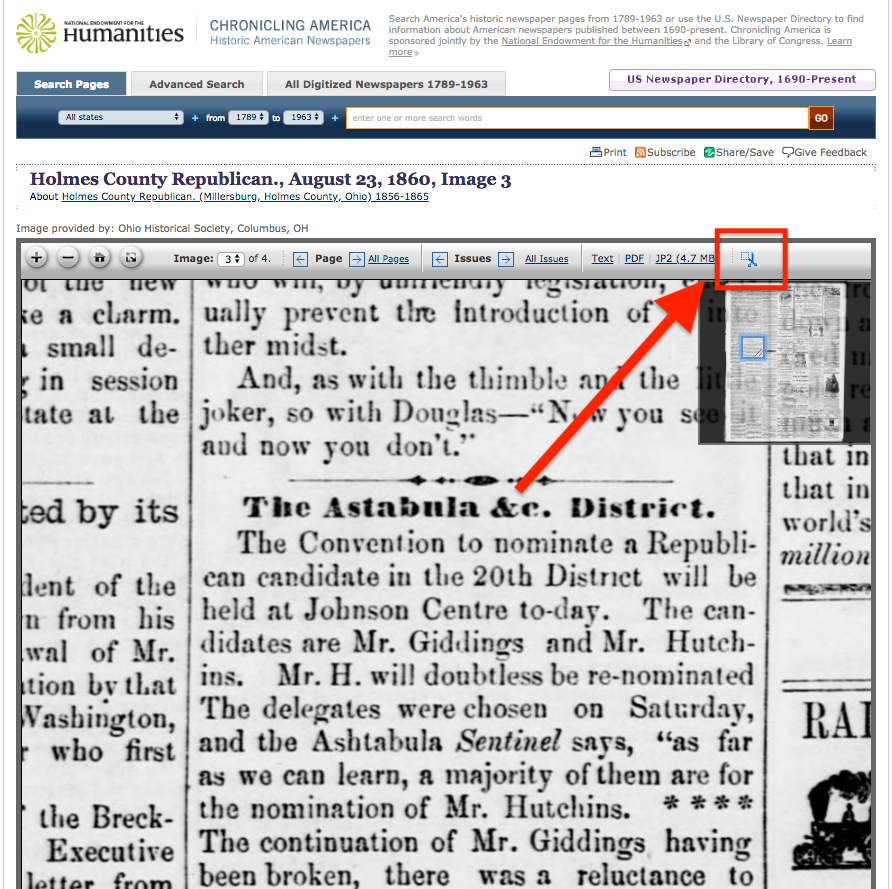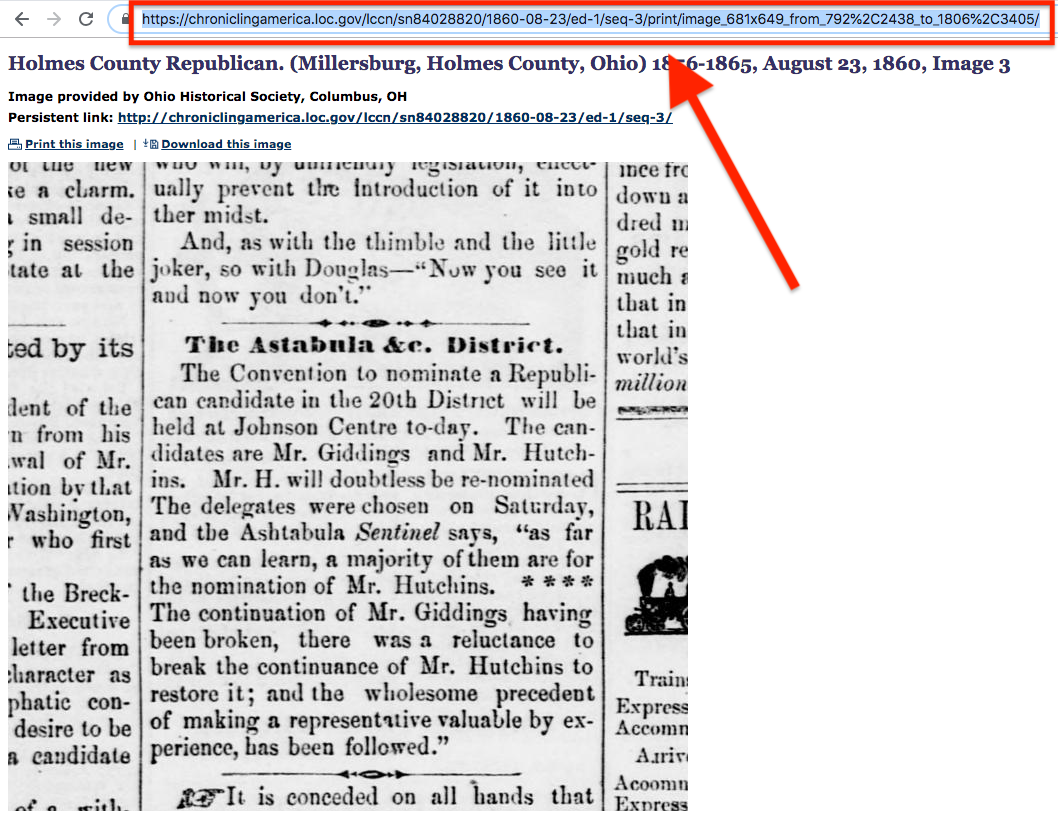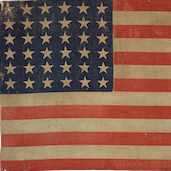Assignment Description
The year 1860 turned out to be one of the great turning points in American history. With an upcoming presidential election and with the nation deeply divided over the issue of slavery, the very future of the country seemed to be in doubt. What did this pivotal year look like for the people who were experiencing it? To find out, you will be writing a modified version of the New York Times’s “Weekend Briefing” (see recent example) from the perspective of one newspaper during one week from 1860. What was happening during that week? What were the different issues, topics, events, and stories that this paper was covering?
The class will be divided into twelve groups of four students, with each group covering a different month of the year. Each group will then divide up the following four newspapers, each from a different part of the country. Each of these papers was printed weekly and can be read online through the Chronicling America database. Individual students will then select one of the printed issues from that paper during that month to examine. Read the entirety of the paper cover-to-cover, taking notes on what stories, topics, etc. catch your eye. Be sure and read not just traditional stories and editorials, but also things like advertisements, classified ads, sports box-scores, theater reviews, poems, etc. When you have finished reading, select six items that you think are interesting and that, in combination, offer a multi-faceted snapshot of the time and place in which they were printed.
- Holmes County Republican (Ohio) - https://chroniclingamerica.loc.gov/lccn/sn84028820/issues/1860/
- Keowee Courier (South Carolina) - https://chroniclingamerica.loc.gov/lccn/sn84026912/issues/1860/
- Manitowoc Pilot (Wisconsin) - https://chroniclingamerica.loc.gov/lccn/sn85033139/issues/1860/
- Staunton Spectator (Virginia) - https://chroniclingamerica.loc.gov/lccn/sn84024718/issues/1860/
You will then write a short summary (“briefing”) for each item that gives the details and context for the topic. Each of these should be around 150-200 words in length. Being able to concisely summarize an item will require you to do additional sleuthing in order to understand the context, background, and particulars of your items. For instance, if a story about the state legislature mentions a politician who you’ve almost certainly never heard of, look up biographical information about them. Or if that same story is talking about an issue you don’t understand (say, a proposed tax bill), you might want to consult preceding issues from the same paper or other newspapers from the same state in the Chronicling America database to see if you can figure out what they’re talking about. The goal is to gather enough information about the item so that you can effectively summarize it to someone who knows nothing about it.
At the end of the briefing, you will write a 500-word big-picture summary of the newspaper itself. What kind of paper was it? What inferences can you make about its readers and their interests? Once again, this will require you to do some background research on the paper and the place where it was published.
Submit your Weekend Briefing as a Word document in the following format: “Lastname_WeekendBriefing.docx” (ex. “Blevins_WeekendBriefing.docx”) and upload it to this Dropbox folder.
Deadline: Sunday, September 30th by 5:00PM.
What you will learn from this assignment:
- Empathy. What was American life like in the year 1860? You will immerse yourself in another time and place and see the world from that perspective.
- Sleuthing skills. Who were “Mr. Douglas” and “Mr. Avery” and what were they disagreeing about in Charleston? What is “cochineal” why was it being sold in “ceroons”? You will need to be able to gather and synthesize information in order to fully understand events, topics, or trends - big or small, in 1860 or 2018.
- Knowledge. You will emerge from this assignment with both a deeper understanding of American society during a pivotal moment in the country’s history along with what journalism was like in the nineteenth-century United States.
What you will be evaluated on:
- Selection of stories. Think creatively about what you want to include. Can a reader get a rich sense of this particular time and place by reading your briefing?
- Clarity and conciseness. What is the fewest number of words you need to convey necessary information to a reader who is completely unfamiliar with the topic?
- Depth of knowledge and research. Did you complete the requisite research to familiarize yourself with the item and then convey that knowledge to the reader?
Mechanics:
- The items do not need to be exactly within a week of the newspaper issue’s print date, but should be close.
- Each item should include a URL to a “clipping” of the newspaper issue. See example here.
- A list of sources that you consulted for more information
Example News Item:
Two abolitionists were executed on March 16th in Virginia. Albert Hazlett, twenty-two years old, and Aaron Stevens, twenty-nine, had participated in the notorious abolitionist John Brown’s failed attempt to seize the federal arsenal at Harper’s Ferry this past October. Stevens was wounded and captured during the raid, and Hazlett was arrested a week later after fleeing to Pennsylvania. Both men met their fate with bravery and expressed no remorse for their crimes. The day before his execution Hazlett wrote in a letter, “If I had ten thousand lives I would willingly lay them all down for the same cause.”
The assault on Harper’s Ferry was intended to spark a slave revolt, but a company of U.S. Marines quickly retook the armory from Brown’s group before news of the rebellion could spread. The raid and Brown’s execution in December have further fanned the flames of discord between North and South. To southerners, Brown was a mad-man and a murderer. For abolitionists, he was a crusader and a hero. The slavery question will undoubtedly take center stage during this fall’s election.
“Stevens and Hazlett Hung,” Pomeroy Weekly Telegraph, March 27, 1860, page 2. https://chroniclingamerica.loc.gov/lccn/sn85038184/1860-03-27/ed-1/seq-2/print/image_681x648_from_3431%2C3432_to_5881%2C5765/
Sources:
- “John Brown’s Raid on Harper’s Ferry,” Wikipedia, https://en.wikipedia.org/wiki/John_Brown%27s_raid_on_Harpers_Ferry. Accessed August 30, 2018.
- “Execution of Stevens and Hazlett” New York Times, March 20, 1860 https://www.nytimes.com/1860/03/20/archives/execution-of-stevens-and-hazlett-particulars-of-the-last-scene.html. Accessed August 30, 2018.
- “Chapter 12: Death and Burial” from “His Soul Goes Marching On”: The Life and Legacy of John Brown, West Virginia Archives and History Online Exhibit. http://www.wvculture.org/history/jbexhibit/jbchapter12.html. Accessed August 30, 2018.
How to create a newspaper “clipping”:
Find your news item on the newspaper’s page and zoom in as best you can so that you can read and see it. Then click the scissors icon in the upper right.

Copy the URL from the page that this brings you to and paste it into your weekend briefing, as shown above.

